Tuesday, December 18th, 2012
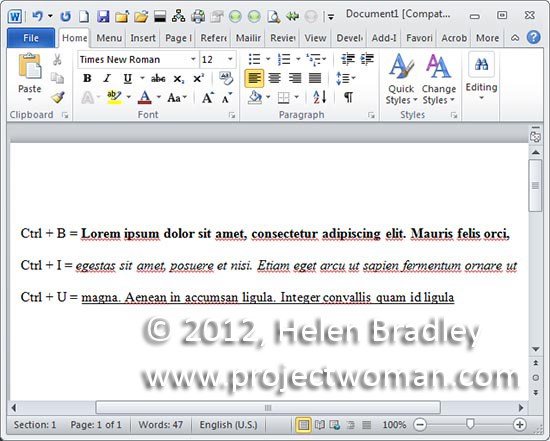
When you want some text to stand out by being bolded you can press Ctrl + B and then type the text. To turn bolding off, press Ctrl + B again. This also works to bold already typed text – select the text and press Ctrl + B to bold it. The keyboard shortcut Ctrl + I can be used to italicize text and use Ctrl + U to underline it.
Helen Bradley
Labels: bold, how to, italics, Microsoft Office, tip, trevor office, trevor payne, underline, Word
Categories:office, trevor tip
posted by Trevor Payne @ 8:00 amNo Comments links to this post
Tuesday, December 11th, 2012
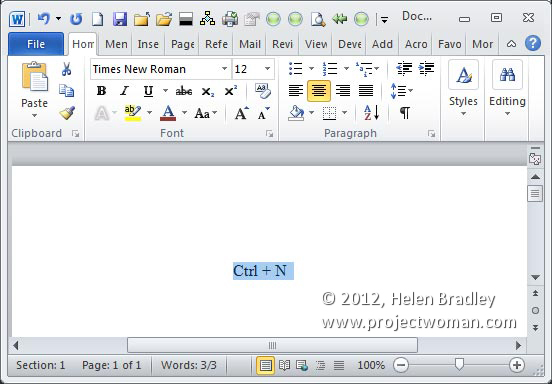
You can bypass the Open and New document dialogs in Word using shortcut keystrokes. To start a new blank document from inside the document you are working on now, press Ctrl + N. To open a document that already exists to reference or edit it press Ctrl + O and browse to locate and select the document to open and click Open.
Helen Bradley
Labels: how to, Microsoft Office, new window, tip, trevor office, trevor payne, Word
Categories:office, trevor tip
posted by Trevor Payne @ 8:00 amNo Comments links to this post
Tuesday, December 4th, 2012
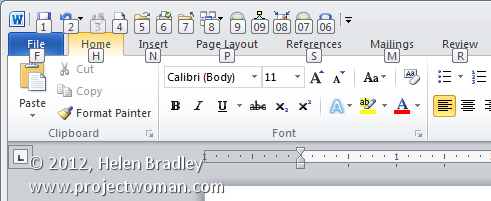
Navigating the Ribbon in Microsoft Office applications using the mouse can be tedious. You can navigate the Ribbon using the keyboard by pressing Alt. This displays what Microsoft calls KeyTips which are letters and numbers overlaid over each available option. Press the letter or number that corresponds to the command to select.
Helen Bradley
Labels: how to, Ribbon microsoft office, tip, trevor office, trevor payne
Categories:office, trevor tip
posted by Trevor Payne @ 8:00 amNo Comments links to this post
Tuesday, November 27th, 2012
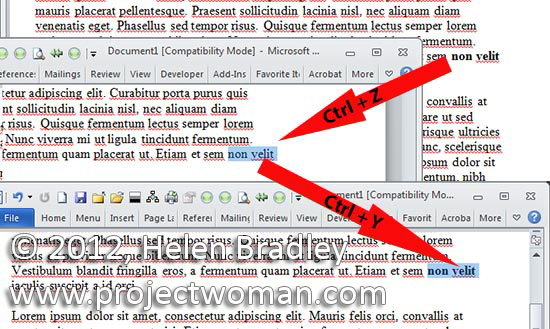
Made a mistake? Undo it with Ctrl + Z and, if you change your mind yet again, redo the undone command by pressing Ctrl + Y. In most programs you can press Ctrl + Z repeatedly to roll back your changes.
Helen Bradley
Labels: how to, Microsoft, Microsoft Office, redo, tip, trevor office, trevor payne, Undo, Word
Categories:office, trevor tip
posted by Trevor Payne @ 8:00 amNo Comments links to this post
Tuesday, November 20th, 2012

When you need view formulas instead of their results press Ctrl + ~ to display formulas in all cells in the worksheet. To return to viewing the worksheet as it was, press Ctrl + ~ again.
Helen Bradley
Labels: display formulas, Excel, formulas, how to, Microsoft, tip, trevor office, trevor payne
Categories:office, trevor tip
posted by Trevor Payne @ 8:00 amNo Comments links to this post
Tuesday, November 13th, 2012
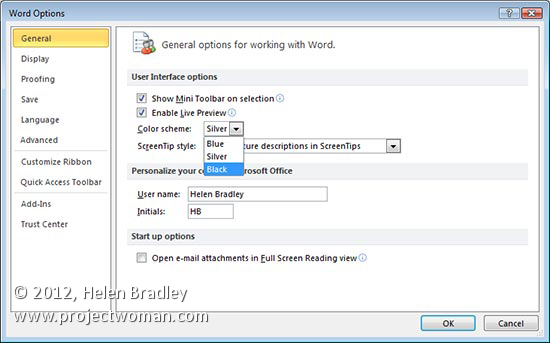
Use these keys to quickly select items in any Windows dialog. Press Alt+Down Arrow to open a dropdown list and then use the Up Arrow and Down Arrow to navigate to an item to select. Use the Space Bar to select or deselect options in the dialog box or, if an item has a letter underlined in its description press Alt + that letter – for example for File, press Alt + F.
Helen Bradley
Labels: dialog box navigation, how to, key shortcuts, Microsoft Office, navigate, tip, trevor office, trevor payne
Categories:office, trevor tip
posted by Trevor Payne @ 8:00 amNo Comments links to this post
Tuesday, November 13th, 2012
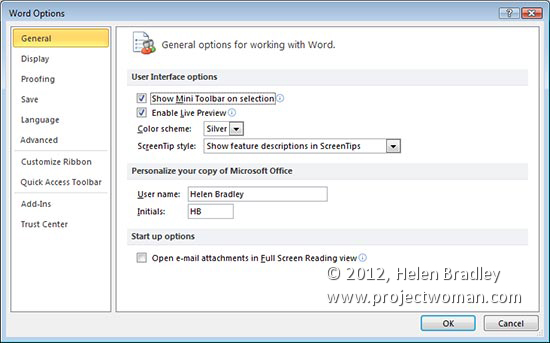
In any Windows program, Office included you can move through dialog boxes quickly without using your mouse if you press the Tab key on your keyboard. Tab moves you from one selectable item to the next. To move in reverse press Shift + Tab. If you press Ctrl + Tab you can move to the next tab in a tabbed dialog and press Ctrl + Shift + Tab to go back one tab.
Helen Bradley
Labels: dialog box, how to, Microsoft Office, navigate dialog, tip, trevor office, trevor payne, Word
Categories:office, trevor tip
posted by Trevor Payne @ 8:00 amNo Comments links to this post
Tuesday, November 6th, 2012

To select an entire row or column in an Excel worksheet, click the column letter or the row number. To select multiple columns or multiple rows click and drag over the column letters or row numbers to select. To select the entire worksheet, click the empty box at the intersection of the Rows and Columns in the top left of the worksheet.
Helen Bradley
Labels: cells, Excel, help, how to, Microsoft, select, spreadsheet, tip, trevor office, trevor payne
Categories:office, trevor tip
posted by Trevor Payne @ 8:00 am1 Comment links to this post
Tuesday, October 23rd, 2012
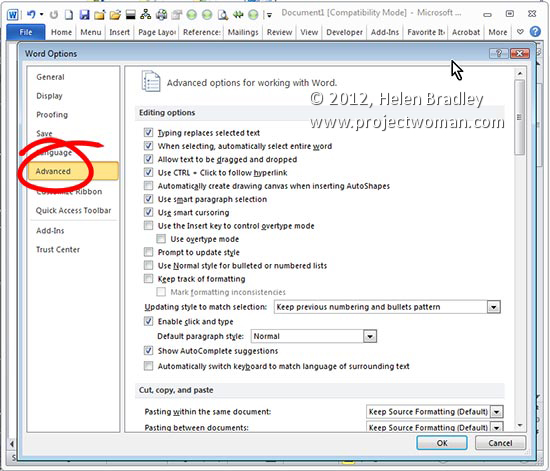
It’s generally a great idea to go through Word and set it up for your own personal working style. Head to the preference area by clicking File > Options (Office button > Word Options in Word 2007) and click Advanced. Here you can set preferences for Editing, Printing, Display and so on to make Word work the way you want it to.
Helen Bradley
Labels: how to, Microsoft, preferences, set up, tip, trevor office, trevor payne, Word
Categories:office, trevor tip
posted by Trevor Payne @ 8:00 amNo Comments links to this post
Tuesday, October 16th, 2012
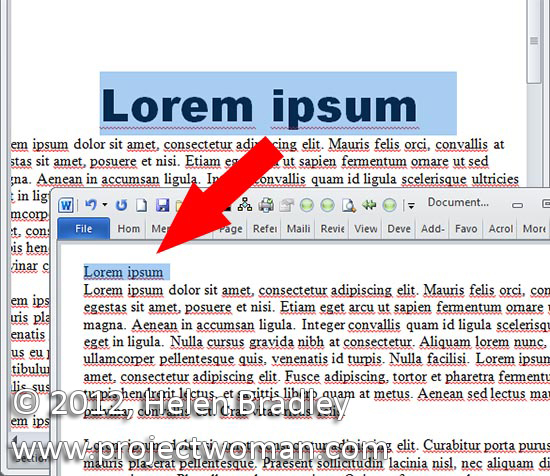
If you are having second thoughts about the look of your document you can remove the formatting. Select the text that you want to strip of its formatting and and press Ctrl + Space Bar to remove its formatting. If you press Ctrl + Shift + N you’ll apply the default Normal style to the selected text.
Helen Bradley
Labels: formatting, Microsoft, remove formatting, style, trevor office, trevor payne, Word
Categories:office, trevor tip
posted by Trevor Payne @ 8:00 amNo Comments links to this post











